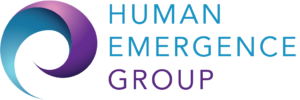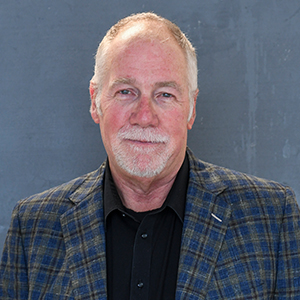As a business leader, you are tasked with professional development for and with your team members. This process can take different forms, such as coaching, consulting, training, and mentoring.
All of these modes of learning are about the development of individuals. You deploy one or the other because you want to give your team members, or your team overall, better skills or knowledge, or help them develop behaviors that will benefit them in the workplace.
While these terms are often used interchangeably, there are distinct differences. Each serves a specific purpose, even if the ultimate goal is the same—or at least appears to be the same. And when you break down each mode, you can see how they uniquely apply to the workplace environment. So let’s dig a little deeper into each.
Training: Introducing New Skills and Knowledge
Every job involves an element of training. This might be as simple as instructing a new hire about certain processes via onboarding. For both new and current employees, training could involve a new task or initiative being introduced to the company’s business strategy. Training can be individual or group-based.
Group training presents a great opportunity to identify strengths and weaknesses. By bringing everyone together, you allow the group to uncover ways they can support each other and become stronger.
At Human Emergence Group, we go even deeper into the concept of training by understanding how people “operate.” Using our CARE model, we look at four personas that take into account the components of active, passive, thinking, and feeling.
-
- Cooperator: passive + feeling
- Analytical: passive + thinking
- Regulator: active + thinking
- Energizer: active + feeling
Identifying how each member on the team functions helps everyone better understand why they struggle to work alongside one another. By providing this training, we’re giving people the skills they need to communicate effectively and work together in a way that progresses company goals.
Of course, there is also the day-to-day training aspect of company leadership. In careers where safety is a priority, training is a crucial component (manufacturing, scientific research, farming, etc.). Keeping up to date with safety protocols ensures everyone is protected from—and prepared for—workforce hazards. There are even governmental agencies that monitor training in this regard.
In all cases, training is never a “one and done” task to check off your list. The most successful business leaders are continuously working to optimize their teams’ performance. Whether it’s a refresher course to reinforce a previous training or something completely new and different, training should always be an ongoing process. As they say, always be learning.
Coaching: Identifying Gaps, Overcoming Challenges
Coaching can be one of the most effective ways to uplevel your team members’ performance. This approach expands beyond the sometimes “logistical” nature of training and delves deeper into underlying issues individual employees may be facing. Oftentimes, employees feel they have no one to talk to about certain issues they’re dealing with, which will always impact performance negatively.
The best coaches work to explore personal characteristics that may be impacting professional relationships. For example, something from one’s past—let’s say dealing with “authority” issues—might be interfering with an employee’s ability to work closely with company leaders, yourself included. Coaching helps employees identify problems, develop their thinking surrounding those problems, and ultimately evolve their actions.
The coach also stands with the employee, as an advocate and professional developer, to transform specific challenges into victory. Of course, the employee is responsible for participating in this process and held accountable to reach their desired goals.
If you, as a company leader, are the one performing the coaching, it is highly beneficial to become aware of how individual employees respond to coaching styles. Some team members welcome a more gentle style of coaching, whereas others might embrace a “tough love” approach. Neither is right or wrong. But, you can really maximize your coaching effectiveness if you know each team member’s preference. It can also be very effective to bring in an outside coach for your team. Executive coaches use a mix of assessments, planning, and individual sessions to your team to capitalize on the strengths of each team member and develop them into their highest potential.
Consulting: An Opportunity to Heighten Performance
Here’s where the lines start to blur a little, between coaching and consulting. Both tend to serve an ultimate goal of heightening performance. However, whereas coaching aims to uncover the barriers employees come up against in their professional life and devise solutions, consulting takes the reins and helps apply those solutions.
Another difference is that coaching often occurs internally. You or an executive coach works with your team to identify gaps and find ways to overcome them. Yet, everyone has opportunities to learn. A company might bring in an outside consultant to assess everything from processes and business strategy to workplace relationships, and you, as a business leader or manager, might be an active participant in that analysis.
A consultant owns a specific set of skills that allows them to uncover areas for improvement, even if it’s not necessarily an industry they know intimately. However, most consultants choose to work in industries in which they possess deep knowledge.
One additional difference between coaching and consulting is that consultants often set clear start and end dates, at least initially. Coaching is often a more continuous thread throughout your leadership tenure.
A helpful way to think about coaching in this way is to use the example of weight loss. You might get a consultant to help you apply proper diet and exercise to your lifestyle—and you may very well be successful. But, unless you truly understand the underlying reasons why you tend to gain weight (the “problem”) in the first place, you’ll never sustain lasting weight loss. That’s where the coach, in addition to the consultant, becomes an invaluable resource.
Mentoring: The Best Leaders Rise to this Occassion
Harvard Business Review recently published an article titled, “The Best Managers Are Leaders—and Vice Versa.” The crux of the message is that managers and leaders share characteristics that elevate their potential to be in a mentoring relationship with their employees. Yet, that relationship can mean different things at different times.
Contributor James R. Bailey writes, “…we should want everyone—executives and employees—to lead when the time is right and manage when the time is right. Often, one set of challenges requires us to display strong leadership skills to provide teams with direction, whereas another requires us to buckle down and focus on execution.”
Finding this balance is where mentorship can really shine. A good mentor offers direction but also provides tools for execution. Effective mentors also are experts in listening and being open to one’s interpretation of any given situation.
In many environments, mentorship is viewed as a “bonus” or “extra.” But, if you can adopt mentorship skills and incorporate them into your leadership repertoire, you are making a smart investment in your team and setting them up for success. It’s just one more way to foster positive relationships among your team members.
Approaching Leadership from a Holistic Perspective
When approaching any leadership position, it’s important to know that none of these human development modes are either “right” or “wrong.” They each have their own place in conducting business. It does, however, fall on you to determine which approach is appropriate for specific situations.
At Human Emergence Group, we provide executive coaching services as well as consulting for businesses seeking succession planning, leadership development, or greater autonomy and ownership for teams. And we’d love to talk to you about it! Schedule a call with one of our professionals if you’d like a free consultation.









